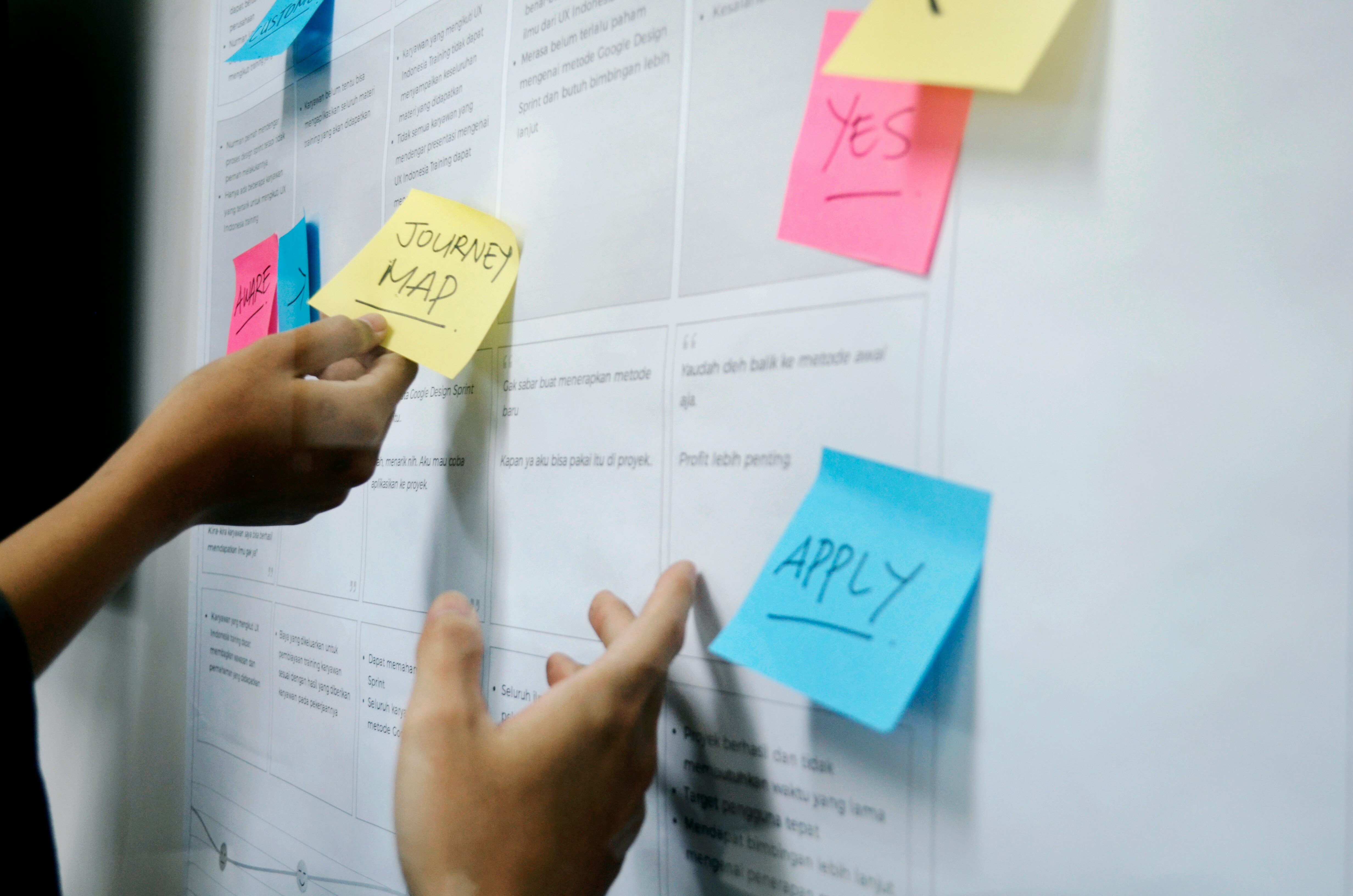The MVP Advantage: Launching Your Product with Confidence
Launching a successful product is challenging, but it doesn't have to be a gamble. There is a way to test the waters, validate your idea, and gather...
6 min read
Written by Keith Shields, Aug 29, 2024

So you’re ready to take the next step toward making your software idea a reality. It's time to build an MVP, right? Or, wait, is it a proof of concept that you need? Actually, maybe “prototype” is the correct term.
If you’re confused about which software step applies, you are not alone. Proof of Concept (PoC), prototype, and Minimum Viable Product (MVP) are often used interchangeably. The truth is, however, that each term represents a distinct stage of the software development process.
A PoC refers to a simple, internal feasibility test designed to prove whether an idea is worth pursuing. If a PoC demonstrates promise, then a prototype further validates the concept. It’s a simple model of the software idea with minimal functionality. An MVP represents the most developed version of these three tools. It’s a functional, albeit simple, software version that can be deployed to beta users. Each of these early software models holds unique value, and leveraging the right tool at the right time is a powerful way to develop a user-centric product.
In this comprehensive guide, we’ll dig into the important differences between a PoC, a prototype, and an MVP. From what it is to when and why to build one, we’ll break down each concept to help you determine which is right for your specific needs. Ultimately, you’ll gain a clearer understanding of these early-stage software tools to help you progress your idea to the next phase and build a successful product.
A proof of concept is a basic demonstration of a software idea's feasibility and potential value. It’s less like a software product and more like a narrowly defined project. For example, it may test the viability of a single feature of the proposed app. You’d need several proofs of concepts to test more than one functionality. A PoC is a way to validate an idea’s technical or business viability before committing significant resources.
Learn more: Proof of Concept: 5 Steps for Successful Software Development
A PoC might be the next step in your software development journey if you have a new or innovative idea that requires validation. A proof of concept can also be a valuable tool for securing internal buy-in with key stakeholders. Likewise, many startups find that a PoC helps raise funding for the next development phase.
Learn More: 5 Best Ways To Get Funding for an App
A prototype is a working model of the software that simulates the user interface and experience. It takes the idea one step beyond the proof of concept, illustrating the idea in more detail and with greater clarity. A prototype provides a way to test the software's design and usability and gather user feedback. It’s a critical step to improve the product even before full-scale development starts.
Learn more: What is a Mobile App Prototype? Benefits & Examples
You might be ready to build a prototype if you’ve already validated your concept with a PoC. A prototype helps refine user experience and design. Testing your interface with a prototype gives you the confidence and clarity needed to launch the first version of your product in an MVP.
Learn more: Win Investments and Buy-in: Pitch Your Idea With an Interactive Prototype
A minimum viable product is a basic version of the software. Of the three models, an MVP is the most developed. It includes just enough core features to satisfy early adopters and gather feedback. An MVP will only include some of the bells and whistles the product will eventually. The goal of an MVP is simply to test the product in the market, validate demand, and gather real-world data to guide further development.
Learn more: Build a Successful MVP: 7-Step Checklist
You may be ready to develop an MVP when you’ve had a chance to refine your prototype and user experience based on testing. An MVP demonstrates the idea's feasibility, not just internally but also in the real world. You should opt for an MVP or PoC when you’re ready to test the market and begin to gain early traction.
Understanding when to use a prototype vs. MVP or a proof of concept vs. prototype may seem challenging in the early stages of software development. A clear understanding of their key differences, including their purpose, audience, level of functionality, etc., can make choosing an option straightforward.
|
Proof of Concept (PoC) |
Prototype |
MVP |
|
|
Purpose |
To demonstrate a software idea’s feasibility |
To simulate the user interface and experience |
To test the product in the market, validate demand, and gather feedback to guide future iterations |
|
Audience |
Internal stakeholders |
Internal teams |
Limited or public users |
|
Functionality |
Rough, basic demonstration of the idea |
Simulates look and feel |
Functional product, essential features only |
|
Risk |
Low, minimal investment with internal exposure |
Medium, some design investment with internal exposure |
Higher risk, limited development investment with potential public exposure |
|
Sequence |
Early ideation |
Following the development of a PoC and refinement |
Following the development of a prototype and refinement |
|
Timeline |
Days |
Weeks |
Months |
It’s important to note that each tool—PoC, prototype, and MVP—builds on the previous one. In other words, the strongest MVP incorporates learnings and feedback drawn from the PoC and prototype phases. Progressing sequentially from idea validation to market testing in this way minimizes risk and facilitates critical buy-in from key stakeholders.
To determine which step to take next to improve your chances of a strong, user-centric product, you’ll want to consider several important factors. The project stage, budget, risk tolerance, and target audience can all inform the right approach for your software project.
Ask yourself these key questions to determine which software development tool—an MVP, a PoC, or a prototype—will strengthen your product the most.
Your answers will guide your software journey and clarify which step to take next.
Choosing the right tool— PoC, prototype, or MVP—is a critical decision in the early stages of software development. Remember that each phase builds upon the last, leading to a user-centered product.
To demonstrate the feasibility of your idea, choose a PoC. Then, to validate your user experience. Next, build an MVP to test market demand and gather real-world user feedback. Choosing the right approach saves time and resources while increasing the chances of success.
The stakes are high when choosing the right step for your software idea. If you’re not sure which option to pursue, find an expert. Leaning on a reliable development partner can be one of the best decisions you can make for your product.
At Designli, the progression from PoC to prototype to MVP is a well-worn path. We believe in the iterative process and have seen it work repeatedly for clients representing a broad range of industries.
For AskIris, a healthcare application aimed at improving the management of hospital supply closets, a strong PoC aligned the app’s idea with real-life user behavior. The concepts outlined in the PoC eventually evolved into a customizable bin system in the MVP. This feature sets the app apart and makes it flexible enough to offer real value to unique healthcare settings.
Learn More: AskIris Success Story
For Icueity, an app that aims to promote self-awareness via ‘continuous 360 reviews,’ building a navigable prototype helped founder Rebecca win buy-in and investment via a friends and family investment round.
Learn More: Icueity Success Story
For Paidback, an app designed to help users pay back debt faster, Designli helped founder Amber’s napkin sketches and transformed them into a complete product roadmap ready for technical execution. The team helped Amber prioritize high-priority features in her MVP while keeping to her Version 1 budget.
Learn More: Paidback Success Story
These stories represent just a few of the many we’ve been a part of over the years. If you’re ready to take the next step toward product success, we’d love to help. Schedule a free consultation to connect with our product experts.
Explore our Custom Software Development Services →
You Might Also Like:
Subscribe to our newsletter.

Launching a successful product is challenging, but it doesn't have to be a gamble. There is a way to test the waters, validate your idea, and gather...

A minimum viable product (MVP) is a powerful tool that enables your company to test a product idea with prospective users without a full build-out,...

The first steps in your product development process are essential. Build a minimum viable product (MVP) to validate your software idea and gather...
Post
Share